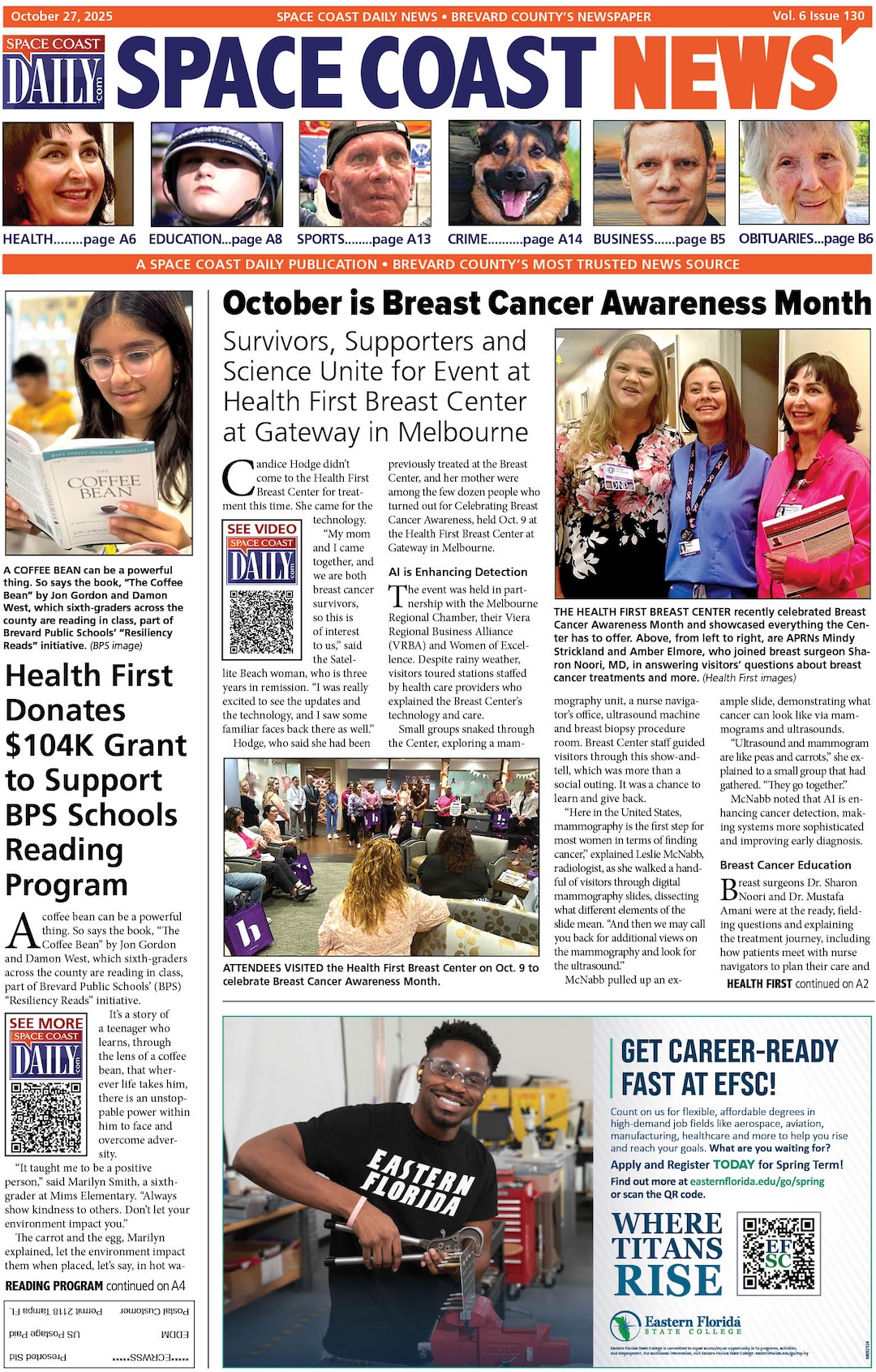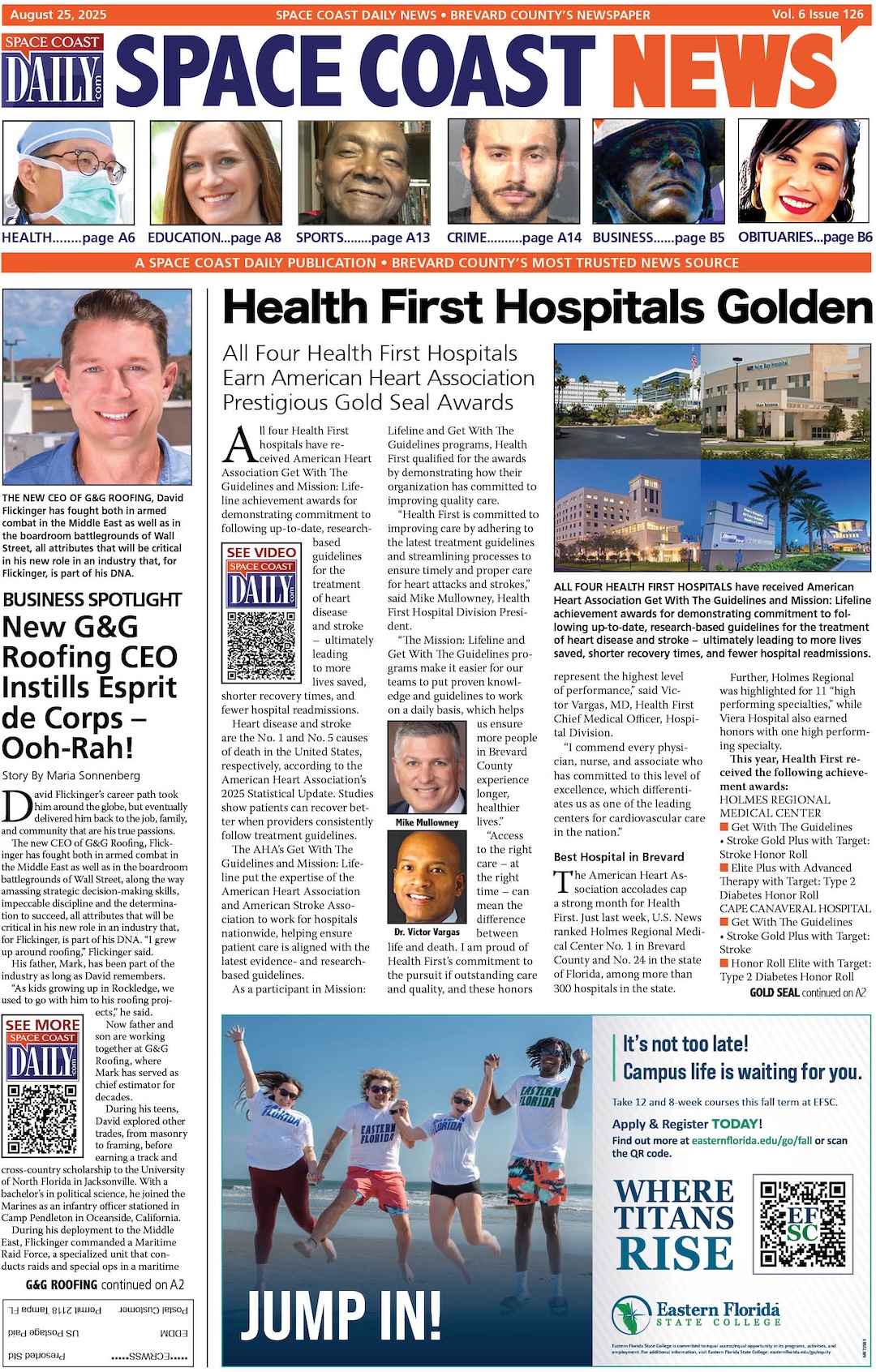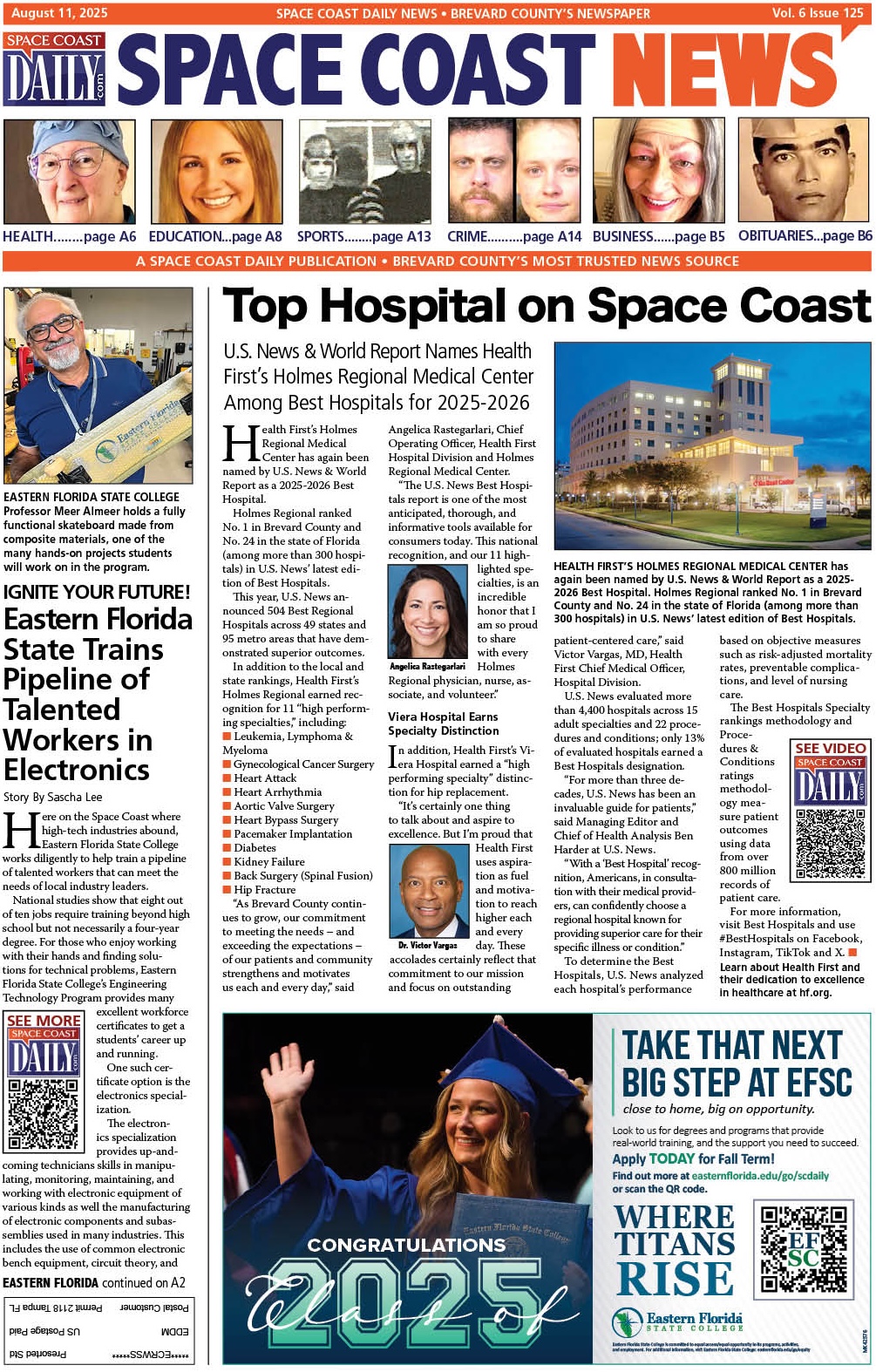What Homeowners Need to Know About Hurricanes and Insurance Claims
By Space Coast Daily // September 2, 2025

Those living in Florida and other hurricane-prone areas have been warned to prepare for “above normal” storm activity in 2025. The National Oceanographic and Atmospheric Administration (NOAA), which provides an annual report predicting the volume and intensity of storms, said in May that the season could produce as many as 19 storms, including five with the potential to reach Category 5 strength.
A higher number of storms translates to a higher possibility of property damage and resulting home insurance claims. To prepare for repairs, policyholders should ensure they understand exactly what their policy covers before filing a homeowners claim.
Addressing key coverage gaps can help with homeowners insurance claims
Discovering after the fact that there are gaps in property insurance coverage can be devastating for someone whose home is damaged by a storm. The best way to avoid that situation is to review your homeowners insurance policy as part of this season’s storm preparation, identifying possible gaps and exploring what can be done to close them.
“One of the biggest gaps homeowners are likely to find in their policy is mold coverage,” says Ted Patestos, CEO and Founder of Tiger Adjusters. “Your main policy may not cover mold damage, even when it covers storm-related water damage. An endorsement is required for that.”
Patestos is a seasoned policyholder advocate in the public adjusting industry who has been a driving force behind tools and strategies that bring greater transparency, efficiency, and value to both consumers and public adjusters. He has developed systems and forward-thinking technologies that reduce friction in the claims process and increase the dollar amounts policyholders are able to recover to repair or replace their personal property. Tiger Adjusters has recovered millions of dollars in settlements through its work filing and negotiating claims on behalf of clients across the United States.
“Homeowners can be surprised to find they have a gap in mold coverage because they assume that if a storm leads to mold, any additional damage the mold causes is covered,” Patestos says. “That’s a wrong assumption. The reality is that anything that wasn’t physically damaged by the storm but was only damaged by mold following the storm may not be covered. That’s why it is super important to have a mold endorsement.”
High hurricane deductibles can derail the home insurance claim process
Homeowners may also be surprised to find that the deductible their policy establishes for hurricane damage differs from that applied to other covered losses. Homeowners insurance companies often set the amount as a percentage of the home’s overall value, with the specific figure ranging from 1 to 5 percent.
“The confusion over hurricane deductibles can be a real problem,” Patestos warns. “A policyholder with a $400,000 house can have a $20,000 deductible. Once the carrier applies depreciation, you could find yourself in a situation where you sustain $30,000 in damage and receive nothing. To make matters even worse, those claimants are still responsible for repairing roofs and other damaged items out-of-pocket to keep their insurance, regardless of whether they received a payout or not.”
Insurance companies have made some changes that may affect those filing a claim in 2025.
Even when policyholders have had good experiences with covered claims in the past, they may find that their expectations won’t be met this season due to changes impacting what their insurance covers. It’s not unusual for policies to be updated, sometimes with changes being made to key policy components, to reflect new industry practices.
Patestos points out “roof surfaces endorsements” as one update that policyholders may see this season. These endorsements include a schedule of values that limit the amount of money paid for roof repair based on its age. When this endorsement is combined with a high deductible, policyholders may end up with very little coverage for repairs, even when they see significant damage.
Patestos also warns about “wind-driven rain” exclusions that have begun to appear in policies. Some homeowners encountered the exclusions when they filed a home insurance claim in the aftermath of Hurricanes Helene and Milton, which hit Florida during the 2024 season.
“Hurricanes bring a lot of wind and a lot of water, with wind speeds high enough to force water underneath the shingles or through windows,” Patestos explains. “Insurance companies use wind-driven rain exclusions to avoid paying for damage that results from water entering a home in that way.”
Even in cases where storm damage is minor, homeowners may find that flooding, loss of power, and other side effects of a hurricane can make it challenging for them to access their policies, interpret them, and begin the claims process for covered damages. A thorough review of insurance information well in advance of storms can help ensure damage is addressed as quickly and easily as possible and determine if additional personal property coverage is needed.












